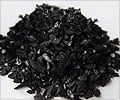Carnegie Mellon University researchers have developed a new method that estimates the amount of greenhouse gas emissions across all tiers of the entire supply chain for all industries.
In developing this method, researchers H. Scott Matthews, Chris T. Hendrickson and Christopher L. Weber have called on companies to embrace new methods to control dangerous carbon emissions that are responsible for much of the world's global warming threats.In an article for Environmental Science and Technology, the authors report that two-thirds of U.S. industries would overlook 75 percent of their total greenhouse gas emissions if they continue to use the same tier one or tier two reporting boundaries.
They further add that the average industry has only 14 percent of its total greenhouse gas emissions in tier one and 12 percent in tier two for a total of 26 percent.
Specifically, the research finds that only six percent of the publishing industry's greenhouse gas emissions result from its tier one and tier two uses of petroleum products and electricity.
However, they add that there are large emissions from electricity and paper in the supply chain that would otherwise be ignored. Similar results appear for other industries.
In practice, most companies reporting their greenhouse gas emissions opt to use only tier one or the tier two boundary.
Advertisement
The researchers have, therefore, urged industry to use comprehensive screening tools, such as the Web site they helped to develop (http:/www.eiolca.net), which are able to analyze carbon footprints and other impacts for different economic sectors in the U.S. economy.
Advertisement
Source-ANI
SPH










